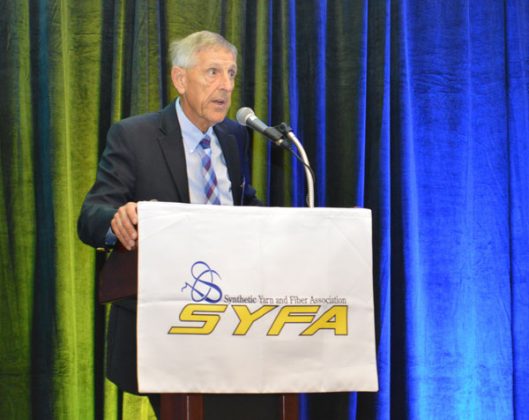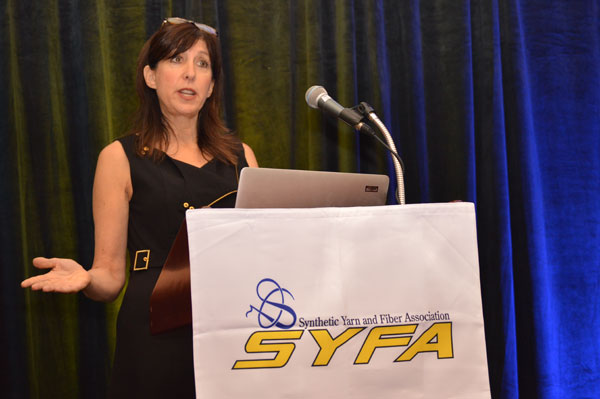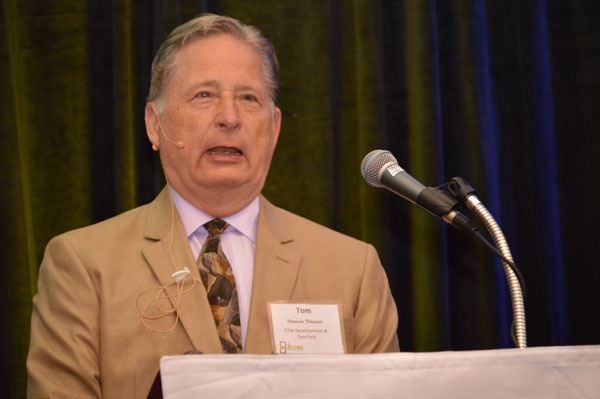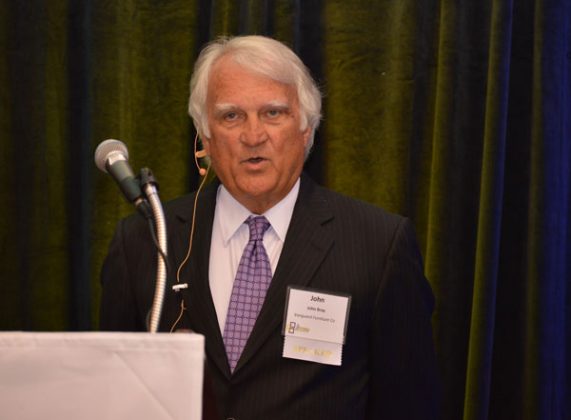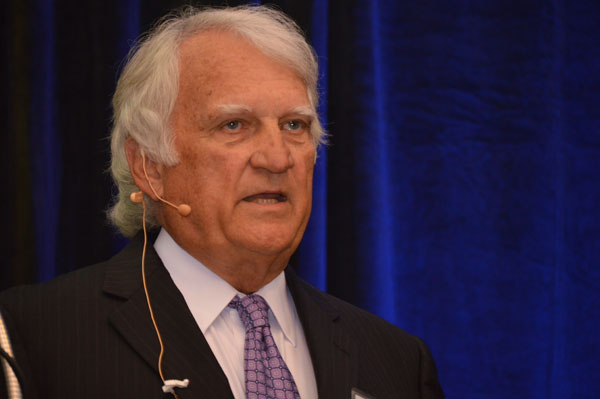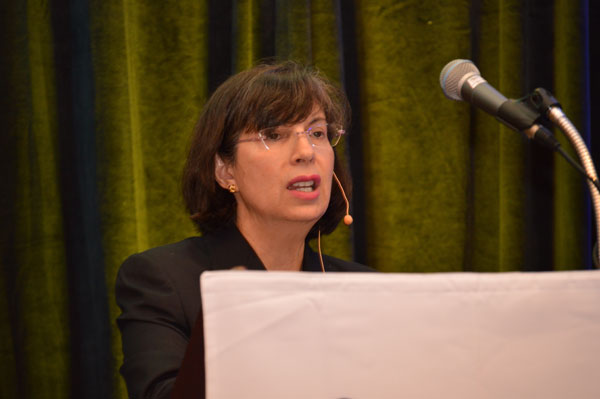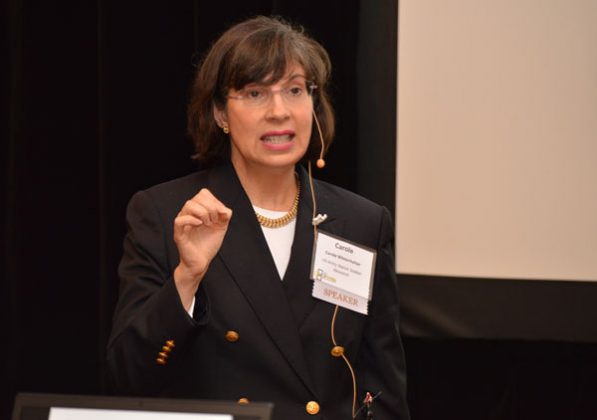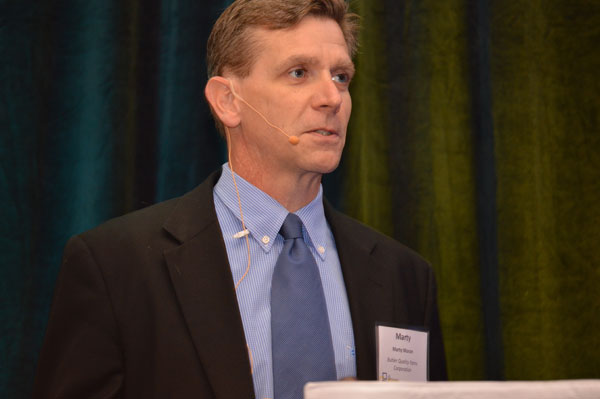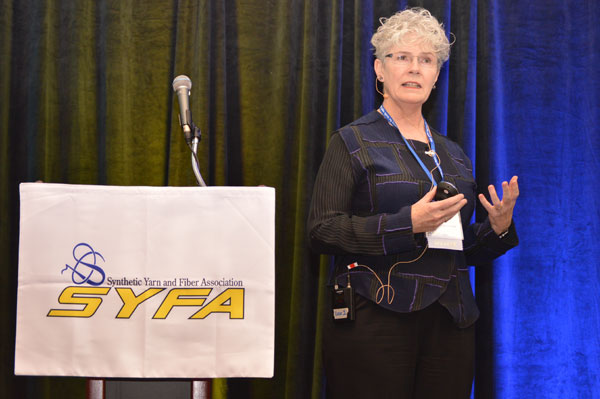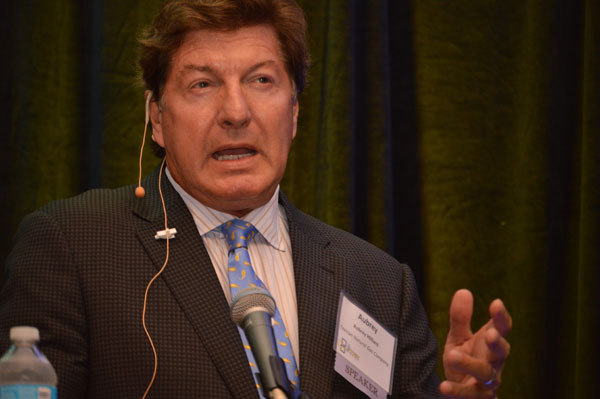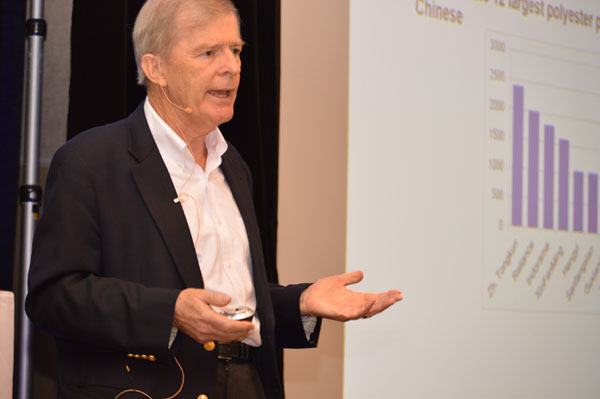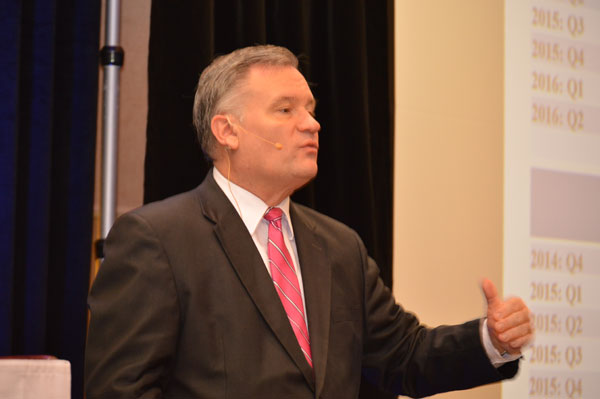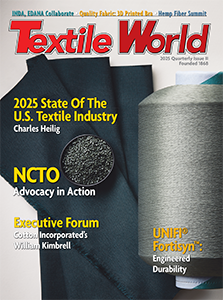YORKVILLE, Ill. — October 5, 2016 — Today, under sunny skies on a perfect fall day during the grand opening celebrations of the company’s new manufacturing plant, Aurora Specialty Textiles Group unveiled its new logo and Mission Statement before a gathering of approximately 100 customers, staff and community leaders.
The celebration marks the end of a two-year period that began with the decision to invest millions in a new, state-of-the art North American textile manufacturing operation, in a new location – but without leaving the area in Illinois where Aurora has operated for over 133 years. Aurora is a subsidiary of Milwaukee, Wis.-based Meridian Industries Inc.
The event also marks the formal launch of the company’s new high tech manufacturing facility and the company’s commitment to investing in state-of-the-art technology while moving into exciting, new global markets for wide width coating and finishing, including print media.
“Today is a tremendous day for Aurora Specialty Textile Group,” said Dan LaTurno, president, Aurora. “It marks the symbolic end of our transition from the Aurora plant to our new Yorkville operation, and the beginning of a new, exciting era. We’ve been committed to becoming a global leader in wide width coating and finishing and this new plant, which could not operate today without the hard work of the people here, is testament to what we are calling today ‘The New Aurora.’
LaTurno added that ‘The New Aurora’ reflects the company’s commitment to staying ahead of the industries it serves. “As the world changes, we now have the world-class capabilities, state-of-the-art equipment and expertise within R&D to meet those challenges.”
After LaTurno introduced the new Mission Statement (see below) and corporate tagline, “Innovative Textile Solutions,” Meridian owner, Bruce Pindyck addressed the group.
“From my first involvement in Meridian in 1968, I have believed in investing back in the business and in being in the forefront from a technological, manufacturing and innovation standpoint,” said Pindyck. “I have always felt that our businesses needed to be nurtured and supported. I am also committed to a strong manufacturing presence in our country. Meridian is my life’s work and I am passionately committed to having our companies be successful for the benefit of all of our constituencies.”
LaTurno explained that the company’s new logo is based on the one by which the company is so well known, but now has added color and dimension to reflect Aurora’s expanded bleaching, dyeing, finishing and coating capabilities.
“The tagline, Innovative Textile Solutions, is even more critical,” LaTurno said. “With the word Innovative we are telling customers that we are pioneering, inventive and modern with a strong focus on R&D. The word Textile reflects our core market, which involves processing the various styles of textiles, and the word Solutions reflects our capabilities as an industry partner and problem solver, because solving problems is how we distinguish ourselves from just being a transaction-based supplier.”
The presentations by LaTurno and Pindyck were followed by a guided tour of the company’s new 124,000 square foot manufacturing operation.
Founded in 1883 on the west side of the Fox River in Aurora, Illinois, USA, just north of downtown, Aurora operated solely as a bleaching operation before adding finishing, dyeing and coating capabilities. Pindyck purchased Aurora in 1977.
Recently, as the global textile industry changed, company leadership saw the opportunity to move into ultra wide-width coating of textiles and establish Aurora as a premier textile coater. That move, however, required finding a larger manufacturing facility and investing in new equipment. After reviewing the options at hand, the company decided to move forward into the future with the new plant and equipment and began adding new employees, while also training existing employees to operate a new generation of equipment.
The plant features the company’s new EHWHA ultra wide-width coating and finishing line, which works easily with a broad range of woven and non-woven materials up to 134” wide. The EHWHA enhances Aurora’s ability to serve both current and new customers, including those in the print media industry.
Today, Aurora is poised to move into a leader position in several new, expanding textile markets.
As the new Mission Statement says:
“Here at Aurora, we serve a growing number of markets and take pride in being a North American leader in wide-width finishing and coating of textiles. We are dedicated to helping our customers succeed in today’s highly dynamic, ever-changing world through our investment in world-class manufacturing capabilities, state-of-the-art technologies and comprehensive Research & Development expertise. To this end, we strive every day to earn our customers’ trust as the coating and finishing partner they can turn to for innovation and high quality product solutions.”
Posted October 5, 2016
Source: Aurora Specialty Textiles

